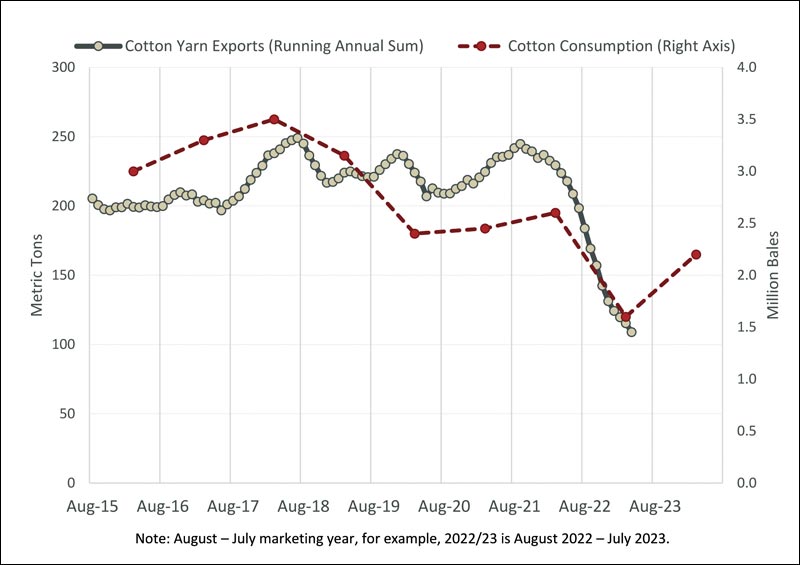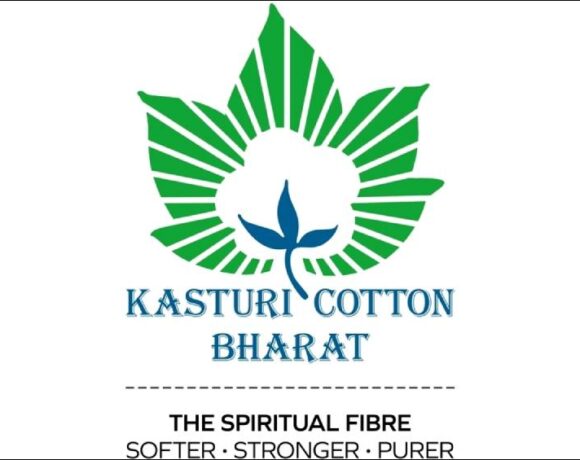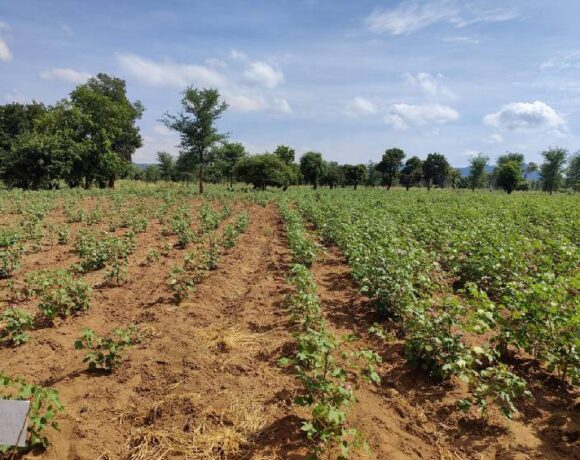Indonesia’s Cotton Consumption Collapses In 2022-23

As per U.S. Department of Agriculture (USDA), in 2022-23, Indonesia’s cotton consumption is projected at the lowest level in over 30 years at 1.6 million bales, down 1.0 million from the previous year. This projected level is lower than the COVID-19 period and nearly 2.0 million below the record witnessed 5 years ago. Plunging yarn exports and falling domestic demand for cotton products are the factors pressuring consumption.
Indonesia imports nearly all of the cotton it spins and roughly 40% of that consumption is exported in the form of cotton yarn. Yarn exports have increasingly provided a greater share of consumption over the past decade relative to exports and domestic purchases of cotton products and fabric. Weaker foreign demand for Indonesian yarn has increasingly influenced cotton consumption.
Year-to-date cotton yarn exports (March 2022-April 2023) were slightly above 100,000 tonnes, less than half the 5-year average level for shipments for that period. Demand from China, Indonesia’s largest buyer by far, has plunged due to slowing global demand for Chinese cotton fabric and products.
Domestic purchases of cotton products account for roughly half of Indonesia cotton consumption. Both a growing population and thriving tourism industry have sustained purchases. However, cotton has increasingly lost volume to man-made fibres (MMF), which include polyester and rayon. Indonesia has increasingly allocated domestically produced MMF textile and products for domestic purchases rather than for exports. Meanwhile, MMF textiles and products imports have doubled over the past decade to support domestic purchases of MMF products.
Despite the country’s population growing by nearly 30 million in the past decade, cotton consumption levels have fallen during this period. Consumers have typically opted for lower-priced and domestically produced MMF apparels. Moreover, the 2020 and 2021 collapse of tourist arrivals, as reported by Bank of Indonesia, has further pressured recent domestic production and consumption of cotton yarn, fabrics and products.
In 2022-23, Indonesia’s consumption prospects are somewhat symptomatic of a global phenomenon. Many countries are experiencing a significant de-stocking of cotton yarn, fabrics and end-products throughout the supply chain. This is despite robust sales of apparels in the first quarter of 2023 across many countries, including Indonesia. The Bank of Indonesia reported that monthly real retail sales of clothing were 17% higher in April compared with the previous month and positive for the third consecutive month.
In 2023-24, cotton consumption is forecast to rise 700,000 bales to 2.3 million as spinners replenish depleted inventories and yarn export prospects are projected to normalize. Moreover, sustained purchases of cotton apparel by citizens and tourists are expected to support re-stocking across the supply chain. Despite the current year’s consumption collapsing to the lowest level since 1990, cotton consumption is projected to rebound in the next marketing year, but expected to remain lower than historical levels.














